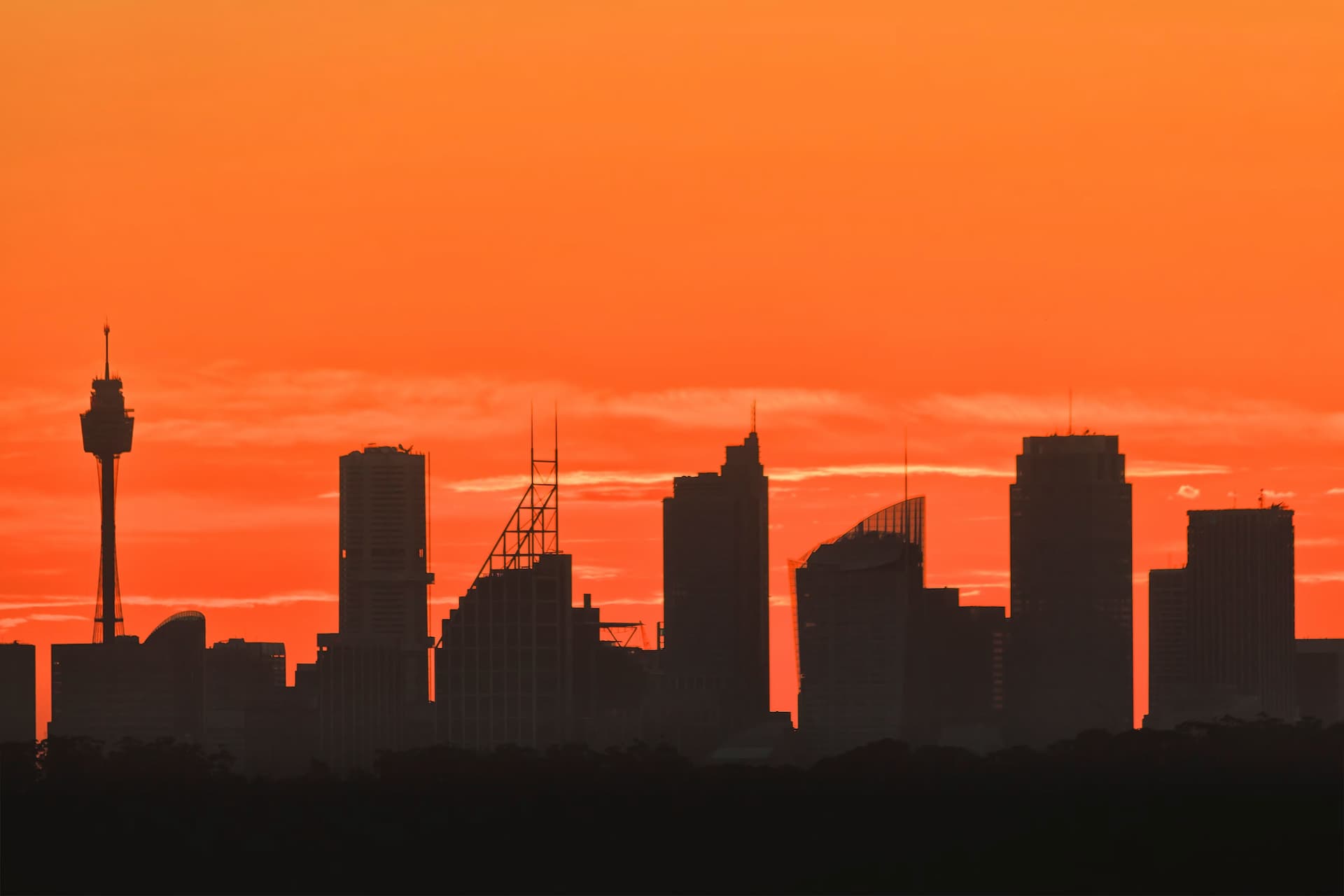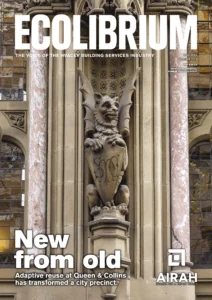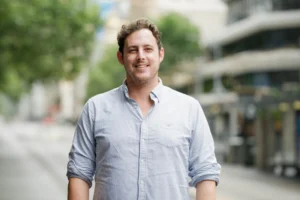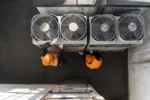The fans of Sydney

Ecolibrium staff writer Nick Johns-Wickberg explores how a mobile cooling hub in the Harbour City prevented three medical emergencies this summer past.
Dr Timothy English is the leader of the University of Sydney’s HHEATeam, the driving force behind a pop-up cooling hub initiative that provides relief to people experiencing homelessness during extreme heat.
The cooling hub uses practical, low-cost cooling techniques such as misting fans, ice packs, wet towels, and foot paths to stave off heat.
This past summer, English and his team – including partners from St Vincent’s Hospital, University of Technology Sydney, Queensland University of Technology, and the City of Sydney – deployed the cooling hub three times across four days of extreme heat.
English took the time to reflect on the successes and lessons of the project’s first summer.
Nick Johns-Wickberg: What data did you obtain from your deployments of the cooling hub, and what have you learnt from the data?
Dr Timothy English: We obtained the number of attendees, physiological measures, survey responses, and people’s length of stay. We haven’t fully analysed these data yet. However, at a quick glance of these preliminary data, it seems as though attendees reported cooler thermal sensation and improved thermal comfort, and gave positive feedback such as feeling comfortable with the support provided and recommending it to others.
Most importantly, we averted three cases of potential emergency department (ED) admission, as reported by health services.
NJW: What were the most successful aspects of the project?
TE: By far, servicing those three cases that may have been admitted to the ED, as well as the co-design and co-evaluation process.
NJW: Is there anything you’d change next time around?
TE: We need to continue to research the feasibility and scalability of the hubs, and are seeking more funding to test and scale. This was just a pilot, and we have learnt that there are many things we can change to potentially improve the service, such as whether entertainment like radio, TV and reading materials will reduce boredom and increase length of stay, or if a more structured outreach and greater communications would increase the number of attendees.
It is evident that these vulnerable people won’t travel far to the hub, and as such we need to pop up in more locations to service more people.
NJW: Was it challenging to get the staff together at short notice given that you can only forecast a few days in advance?
TE: The first deployment was tough, as most of the fans needed to be assembled and it was the first time assembling the marquees. The HeatWatch app now gives us a seven-day forecast, and we generally make the decision about four to five days out, so getting staff together isn’t a major issue.
Sydney is lucky to have an exceptional health service called the Homeless Health Service that operates out of St Vincent’s Hospital Sydney, and the manager there – Matt Larkin – coordinates staffing for the cooling hubs. When in the past he would have organised staff to do more outreach to check in on those sleeping rough and provide bottles of water, now he focuses staff on a more targeted intervention: the cooling hubs. Funding and collaboration with services such as these will be crucial to the scalability of this initiative.
NJW: Are there plans to scale the project up across Australia next summer?
TE: This was the initial plan; however, we may need to delay scaling across Australia to the summer of 2025–26 while we first refine it here in Sydney next summer (2024–25). We want to make sure we service as many people as possible and provide the best service possible, and to do that we need to run more testing, such as deploying multiple cooling hubs in Sydney at one time while testing comms, access, outreach, and many other variables.
NJW: What kind of resources are required to scale up, and how many other hubs are you planning to establish?
TE: We will be applying for more funding to refine cooling hubs in the City of Sydney first, and then will expand to other cities nationally. This will require extending collaboration with other councils and health services in those other cities, purchasing the required equipment to deploy the cooling hubs, linking with organisations and volunteers to help with staffing, providing renumeration to members of the team with lived experience of homelessness, travel, and of course employing researchers and funding research students to analyse and publish data and develop policy briefs.
We also plan to examine the long-term effectiveness of cooling hubs by comparing ED admissions of people experiencing or at risk of homelessness during extreme-heat events pre- and post-initiative. However, this will likely take upwards of five years to determine.
NJW: Will co-design with people experiencing homelessness continue to play a role as you upscale?
TE: Co-design is crucial. However, co-evaluation is just as important; it should be an ongoing process, with lived-experience members of the team included in all evaluation and decision-making wherever possible. So yes, people with lived experience of homelessness will continue to play a pivotal role as we endeavour to scale and ensure the initiative serves those it aims to assist.
In fact, lived-experience members of our team will be presenting alongside Associate Professor Jo River, Professor Jane Currie and Alejandro Vasquez Hernandez on the co-design approach of the cooling hubs at our upcoming “Heat and Health Research Incubator Summit Series – Humanitarian Settings”.
People who contribute least to climate change are the most affected, and wherever possible should be included in the design and evaluation of interventions that seek to protect them from the devastation predicted.

This article appears in Ecolibrium’s May 2024 edition
View the archive of previous editions
Latest edition
See everything from the latest edition of Ecolibrium, AIRAH’s official journal.





